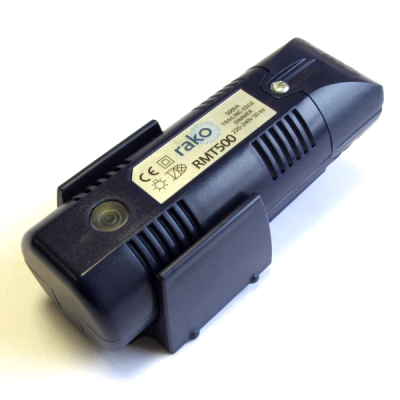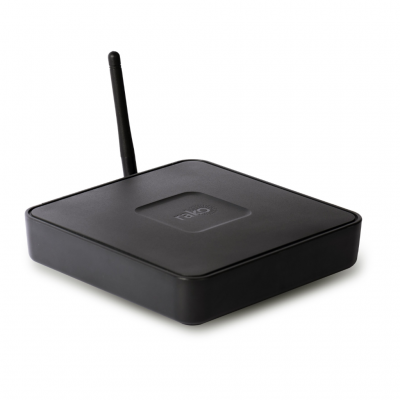Basement Lighting Design in UK Residential Homes
When considering basement lighting design for UK residential homes, it’s essential to not only focus on the aesthetics but also on functionality. One essential aspect of basement lighting design involves choosing the right lighting fixtures. Here are some types of lighting fixtures you can consider:
Pendant Lights
Pendant lights are an excellent choice for basement lighting design. They can be hung from the ceiling to provide ample, focused light to specific areas, such as reading nooks, bars or game tables. Pendant lights come in various styles and sizes, allowing you to find one that complements your basement’s design aesthetic.
Chandeliers
Chandeliers can be a beautiful and functional addition to basement lighting design. They provide a simplistic, elegant touch while also distributing light across a large area. Chandeliers are an excellent choice for open-concept basement spaces or areas where you want to make a statement.
Wall Sconces
Wall sconces are perfect for providing ambient and accent lighting in basement spaces. They can illuminate staircases or other transition areas, and add a distinct design element to the space. Wall sconces are available in various styles and materials, offering a wide range of customization options.
Floor Lamps
Floor lamps are an excellent option for basement spaces with limited ceiling height or where installing fixtures is not possible. They provide ample, focused light that can be easily repositioned as needed. Floor lamps are available in various styles and sizes to suit your basement’s specific design and function.
Lighting Control Systems for Basement Lighting Design
Lighting control systems in UK residential homes are designed to offer ease of use and versatility. By incorporating these systems into your basement lighting design, you create a responsive, adaptable space that caters to all your needs.
Smart Lighting Systems
Smart lighting systems allow you to control your basement lights using a smartphone, tablet or smart assistant. These systems offer several benefits, such as enabling timers or schedules, adjusting brightness, and even changing the colour of your lights, depending on the type of lightbulbs you use. This versatility allows you to create and switch between various lighting scenarios with ease quickly.
How Lighting Control Systems Work
Lighting control systems typically involve a central control module connected to your home’s lighting fixtures. This central module communicates with your chosen control device (smartphone, tablet, or smart assistant), allowing you to manage and adjust your basement’s lighting. You can create pre-set scenarios or adjust the lighting in real-time to suit your needs.
Energy Efficiency in Basement Lighting Design
When designing basement lighting in UK residential homes, it’s essential to consider energy efficiency. Not only will this help reduce your energy consumption, but it can lead to significant cost savings in the long run.
LED Lights
LED lights are an excellent choice for basement lighting design due to their energy efficiency, long life, and wide range of options. LEDs can use up to 85% less energy than traditional incandescent bulbs, which translates to cost savings over time. Additionally, LED lights are available in various colour temperatures and styles, making it easy to find the perfect fit for your basement.
Other Energy-Saving Options
Aside from LED lights, other energy-saving options for basement lighting design include CFLs (compact fluorescent lamps), low-voltage lighting systems, and solar-powered lighting systems. Each option has its benefits, and the best choice depends on your specific needs, budget, and design aesthetic.
Safety Considerations for Basement Lighting Design
Safety should always be a priority when designing basement lighting in UK residential homes. Paying attention to areas that may pose potential hazards can mitigate the risk of accidents.
Well-Lighted Stairways and Exits
Make sure your basement stairways and exits are well-lit to prevent trips and falls. Consider installing floor lighting or wall sconces to provide sufficient lighting in these areas.
Safe and Approved Fixtures
Always use safe and approved fixtures in your basement lighting design. Check the manufacturer’s specifications for recommended uses and installation guidelines to ensure the lighting meets safety requirements. Additionally, if you are unsure how to install a fixture safely, consult with a professional.
Lighting for Specific Basement Uses
Every basement is different, and your lighting design should accommodate the various functions your space serves. Here are some tips for lighting specific basement uses:
Home Theatres:
For home theatres, ambient lighting with dimming capabilities creates a cozy, comfortable atmosphere. Utilize controllable LED strip lighting or wall sconces to provide even, low-level lighting that won’t interfere with the screen.
Gyms:
When planning basement lighting for a gym, focus on bright, even lighting for ease of movement and visibility. Opt for cool colour temperatures that promote alertness.
Offices:
Basement offices benefit from a mix of ambient and task lighting. Select a colour temperature that’s comfortable for extended periods of screen exposure, generally around 4000K.
Playrooms:
For basement playrooms, choose fun, bright lighting that stimulates creativity. Be sure to illuminate play areas and take extra care to light any storage units or shelves for optimal organization and safety.
Choosing the Right Colour Temperature
Colour temperature plays a significant role in the mood and functionality of your basement lighting design. Lights with warm colour temperatures (around 2700K) create a cozy, welcoming atmosphere, while cooler colour temperatures (around 4000K) promote alertness and productivity.
It’s essential to evaluate the specific uses and design of your basement space to determine which colour temperature is most suitable. You may wish to use a combination of colour temperatures in different areas to create a balanced basement lighting design.
Cost Considerations for Basement Lighting Design
The cost of basement lighting can vary widely depending on the types of fixtures, lightbulbs, and control systems used. Here are some tips for designing a budget-friendly basement lighting plan.
Shop Around:
Compare prices from various retailers to ensure you’re getting the best deals on lighting fixtures and other components.
Consider DIY:
If you feel comfortable, consider installing your lighting fixtures to save on professional installation costs. Always follow safety guidelines and consult with a professional if you’re unsure about any aspects of your lighting design.
Choose Energy-Efficient Options:
Energy-efficient lighting options, like LED lights, can result in cost savings over time due to reduced energy consumption.
Advanced Lighting Controls for Mood Lighting and Convenience
Utilizing advanced lighting control systems in your basement lighting design can provide a high degree of customization, allowing you to create the perfect atmosphere for any activity or occasion. This can be achieved through mood lighting, light dimming, and app control options tailored to your specific needs and preferences.
Mood Lighting
Mood lighting is a technique that manipulates light to create various atmospheres or evoke emotional responses. With the use of advanced lighting controls, you can adjust the brightness, colour, and even pattern of your lights to set the desired mood in your basement.
For instance, if you’re hosting a movie night, you may want to switch to a warm, dimmed lighting setup to create a cozy, comfortable ambiance. Conversely, if you’re using your basement as a workspace, brighter, cooler lighting can help increase focus and productivity. Advanced lighting controls allow you to pre-set and seamlessly switch between various lighting scenes with minimal effort.
Light Dimming
Dimming is a common feature in advanced lighting control systems, allowing you to have complete control over your basement’s brightness levels. Dimmable lights are not only versatile in setting the right atmosphere but also in providing energy efficiency.
When incorporating dimmable lights into your basement lighting design, ensure to choose compatible dimmer switches and light bulbs. For the best results, select LED bulbs labeled as “dimmable” and check the manufacturer’s guidelines for compatible dimmer switches. Pairing the right devices ensures seamless dimming control and prolongs the lifespan of your lighting components.
Lighting App Control
One of the most convenient aspects of advanced lighting control systems is the ability to manage your basement’s lights using smartphone or tablet applications. These apps often provide a simple interface through which you can adjust various lighting elements such as dimming, colour temperature, and individual light controls right from the palm of your hand.
Some apps even have additional features, such as scheduling and timers, room grouping, and integration with popular smart home systems. This level of control offers flexibility, convenience, and a personalized lighting experience tailored to your unique requirements and preferences.
In conclusion, advanced lighting controls enhance the basement lighting design in UK residential homes by providing multiple options for mood lighting, light dimming, and app control. These features enable you to have a high level of customization, creating a versatile and adaptable basement space that caters to all your needs and preferences. With careful planning and selection of compatible devices, you can enjoy a functional, energy-efficient, and sophisticated lighting experience in your basement.
Basement Lighting Design Case Studies
To help inspire your basement lighting design, consider exploring various case studies and examples online. These real-life scenarios can provide practical insights into what works well in basements of all shapes, sizes, and uses.
In conclusion, when planning your basement lighting design in UK residential homes, it’s vital to consider various factors like fixture types, lighting controls, energy efficiency, safety, and specific uses. By carefully considering these elements, you’ll create a functional and visually appealing basement space that perfectly meets your needs.
FAQs
What types of lighting fixtures are suitable for basement lighting design?
Pendant lights, chandeliers, wall sconces, and floor lamps are all excellent choices for basement lighting. Each type of fixture offers unique benefits and can be selected based on the specific needs and aesthetics of your basement.
How do lighting control systems enhance basement lighting design?
Lighting control systems offer ease of use and versatility. They allow you to control your basement lights using a smartphone, tablet, or smart assistant, enabling you to create and switch between various lighting scenarios quickly and easily.
Why is energy efficiency important in basement lighting design?
Energy-efficient lighting not only reduces your energy consumption but also leads to significant cost savings in the long run. LED lights, CFLs, low-voltage lighting systems, and solar-powered lighting systems are all energy-saving options to consider.
What safety considerations should be taken into account in basement lighting design?
It’s important to ensure that stairways and exits are well-lit to prevent accidents. Additionally, always use safe and approved fixtures in your basement lighting design and follow the manufacturer’s specifications for recommended uses and installation guidelines.
How can advanced lighting controls enhance the mood and convenience of basement lighting?
Advanced lighting controls allow for a high degree of customization, enabling you to create the perfect atmosphere for any activity or occasion. This can be achieved through mood lighting, light dimming, and app control options tailored to your specific needs and preferences.

Rako Lighting Controls Systems

Rako Keypads

Rako Dimmers

